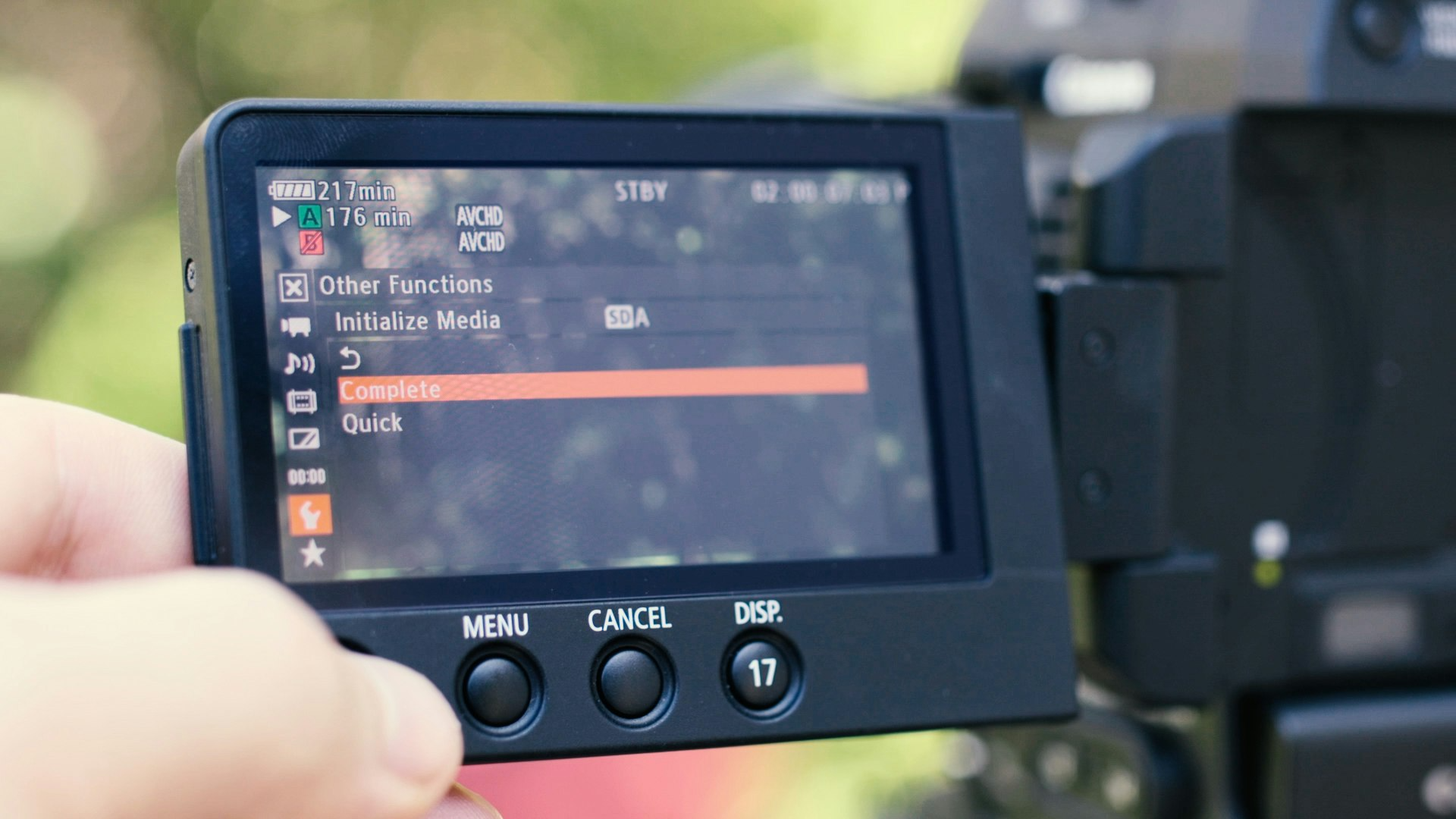Introduction
Formatting an SD card in your camera is a crucial process that ensures the card’s optimal performance and prevents potential data loss or corruption. This task should be performed regularly, especially when you first purchase a new SD card, before shooting a significant event, or if you encounter any errors while accessing the card. Formatting will erase all data on the card, so it’s essential to back up any important files before proceeding.
Why Format Your SD Card in Camera?
Maintaining Card Health
Formatting an SD card within the camera resets its file system to match the camera’s specifications. This helps maintain compatibility, reduces write errors, and extends the life of the card by organizing its sectors efficiently. It also clears out any remnants of old data that could lead to slow read/write speeds or even failure during recording.
Eradicating Data Issues
If your camera shows error messages like “memory card full” despite having free space or can’t read the card, formatting often resolves these issues. It cleanses the card of corrupted files, directories, or viruses that might interfere with the camera‘s ability to access or store new images and videos.
Preparation for Formatting
Backing Up Your Files
Before formatting the SD card, it’s vital to transfer all valuable content to your computer or another storage device. Use a card reader or connect your camera directly to your computer to copy photos and videos. Check that all files have been successfully transferred before proceeding to format the card.
Choosing the Right Time
Avoid formatting an SD card during a critical shoot as it can take several minutes to complete. Instead, do this at home, well before the event, to ensure your camera is ready with a freshly formatted card for optimal performance.
Understanding Different Formats
File Systems for Cameras
Cameras typically support two main file systems: FAT32 and exFAT. FAT32 is compatible with most devices but has a 4GB file size limit. ExFAT doesn’t have such limitations and is more efficient for larger files. Always choose the format recommended by your camera manufacturer.
Checking Camera Settings
Access your camera’s settings menu to find the option to format the SD card. Some cameras may allow you to select the file system. If not, it will automatically use the best-suited format. Consult your camera’s user manual for specific instructions.
Step-by-Step Guide to Format SD Card in Camera
Step 1: Turn Off the Camera
Always power off your camera before inserting or removing the SD card to prevent data loss or damage to the card slot.
Step 2: Insert the SD Card
Slide the card into the designated slot until it clicks into place. Ensure it is inserted facing the correct direction as indicated by the camera or card slot.
Step 3: Enter the Menu System
Turn on your camera and navigate to the settings or tools menu. Look for options related to memory cards, format, or initialize.
Step 4: Select Format Option
Highlight and select the ‘Format’ or ‘Format Card’ option. You may see a confirmation message warning you about erasing all data. Confirm your selection.
Step 5: Wait for Completion
The camera will then start formatting the SD card. The time taken varies depending on the card’s capacity. Do not interrupt the process.
Step 6: Post-Format Checks
Once the format is complete, the camera will usually display a confirmation message. Test the card by taking a few pictures or videos to ensure it’s working correctly.
Troubleshooting Common Formatting Issues
Error Messages During Formatting
If you encounter errors during formatting, try using another camera or a card reader on your computer to format the card. If problems persist, the card may be damaged and need replacement.
Slow Formatting Speeds
Slow formatting times could indicate a problem with the card or camera. Try cleaning the card contacts or updating the camera’s firmware. If speed remains sluggish, consider upgrading to a higher-speed SD card.
Conclusion
The Importance of Regular Formatting
Regularly formatting your SD card in-camera is a simple yet effective way to maintain peak performance and avoid data-related issues. By following the steps outlined above and being mindful of preparation and troubleshooting, you’ll ensure your camera’s SD card is always ready for action.
In summary, formatting your SD card in-camera is a straightforward process that requires careful attention to detail and prior backup of data. By understanding why formatting is necessary, preparing adequately, and following the step-by-step guide, you’ll be able to keep your camera’s SD card functioning optimally, ensuring smooth photography sessions and preserving those precious memories without any hiccups. Remember to periodically check your camera’s settings and update them as needed to accommodate advances in technology and changes in your photography needs.

